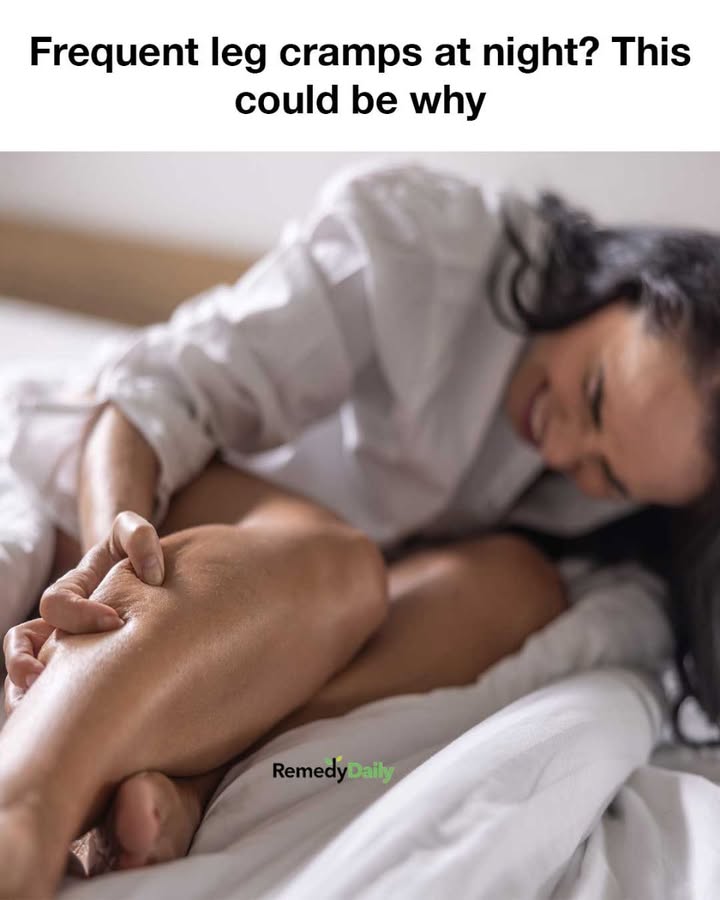Poor circulation can contribute to the occurrence of nocturnal leg cramps. When blood flow to the muscles is restricted, it can lead to oxygen deprivation and the buildup of metabolic waste products, both of which can trigger cramps.
Conditions such as peripheral artery disease (PAD) can cause poor circulation and increase the risk of cramps. Managing underlying conditions, engaging in regular physical activity, and avoiding prolonged periods of sitting or standing can help improve circulation and reduce the frequency of cramps.
7. Medications That May Trigger Cramps
Certain medications are known to increase the risk of muscle cramps. Diuretics, commonly prescribed for high blood pressure, can lead to electrolyte imbalances by increasing the excretion of potassium and magnesium. Statins, used to lower cholesterol, have also been associated with muscle cramps.
If medication-induced cramps are suspected, it’s important to consult with a healthcare provider. They may adjust the dosage or suggest alternative medications. Never stop taking prescribed medication without medical advice.
8. Underlying Medical Conditions to Consider
Several medical conditions can predispose individuals to nocturnal leg cramps. Diabetes, for example, can cause nerve damage (neuropathy) that affects muscle function. Hypothyroidism, a condition where the thyroid gland is underactive, can also lead to muscle cramps due to slowed metabolism and reduced energy production.
Other conditions, such as kidney disease and liver cirrhosis, can disrupt electrolyte balance and contribute to cramps. Proper management of these underlying conditions, through medication and lifestyle changes, can help reduce the frequency and severity of cramps.
9. The Influence of Age and Gender
Age is a significant factor in the prevalence of nocturnal leg cramps. Older adults are more likely to experience cramps due to age-related muscle loss and changes in nerve function. Additionally, women may be more prone to cramps during pregnancy due to increased pressure on blood vessels and changes in circulation.
Maintaining muscle strength through regular exercise and ensuring adequate nutrient intake can help mitigate the effects of aging on muscle function. Pregnant women should discuss any cramping issues with their healthcare provider to ensure proper management.
10. Popular Viral Hacks: Do They Really Work?
Various home remedies and viral hacks claim to alleviate leg cramps, but their effectiveness is often anecdotal. For example, placing a bar of soap under the sheets is a popular remedy, though there is no scientific evidence to support its efficacy.
While some people report relief from such hacks, it’s important to rely on evidence-based approaches for managing cramps. Staying hydrated, maintaining a balanced diet, and engaging in regular exercise are proven methods to reduce the frequency of cramps. Consulting with a healthcare provider can provide personalized recommendations based on individual needs.
11. When to Seek Medical Advice
While occasional leg cramps are usually harmless, frequent or severe cramps warrant medical attention. If cramps are accompanied by swelling, redness, or other unusual symptoms, it may indicate an underlying condition that requires treatment.
Consulting with a healthcare provider can help identify the cause of frequent cramps and determine appropriate interventions. In some cases, diagnostic tests may be necessary to rule out serious conditions. Early intervention can prevent complications and improve quality of life.
Poor circulation can contribute to the occurrence of nocturnal leg cramps. When blood flow to the muscles is restricted, it can lead to oxygen deprivation and the buildup of metabolic waste products, both of which can trigger cramps.
Conditions such as peripheral artery disease (PAD) can cause poor circulation and increase the risk of cramps. Managing underlying conditions, engaging in regular physical activity, and avoiding prolonged periods of sitting or standing can help improve circulation and reduce the frequency of cramps.
7. Medications That May Trigger Cramps
Certain medications are known to increase the risk of muscle cramps. Diuretics, commonly prescribed for high blood pressure, can lead to electrolyte imbalances by increasing the excretion of potassium and magnesium. Statins, used to lower cholesterol, have also been associated with muscle cramps.
If medication-induced cramps are suspected, it’s important to consult with a healthcare provider. They may adjust the dosage or suggest alternative medications. Never stop taking prescribed medication without medical advice.
8. Underlying Medical Conditions to Consider
Several medical conditions can predispose individuals to nocturnal leg cramps. Diabetes, for example, can cause nerve damage (neuropathy) that affects muscle function. Hypothyroidism, a condition where the thyroid gland is underactive, can also lead to muscle cramps due to slowed metabolism and reduced energy production.
Other conditions, such as kidney disease and liver cirrhosis, can disrupt electrolyte balance and contribute to cramps. Proper management of these underlying conditions, through medication and lifestyle changes, can help reduce the frequency and severity of cramps.
9. The Influence of Age and Gender
Age is a significant factor in the prevalence of nocturnal leg cramps. Older adults are more likely to experience cramps due to age-related muscle loss and changes in nerve function. Additionally, women may be more prone to cramps during pregnancy due to increased pressure on blood vessels and changes in circulation.
Maintaining muscle strength through regular exercise and ensuring adequate nutrient intake can help mitigate the effects of aging on muscle function. Pregnant women should discuss any cramping issues with their healthcare provider to ensure proper management.
10. Popular Viral Hacks: Do They Really Work?
Various home remedies and viral hacks claim to alleviate leg cramps, but their effectiveness is often anecdotal. For example, placing a bar of soap under the sheets is a popular remedy, though there is no scientific evidence to support its efficacy.
While some people report relief from such hacks, it’s important to rely on evidence-based approaches for managing cramps. Staying hydrated, maintaining a balanced diet, and engaging in regular exercise are proven methods to reduce the frequency of cramps. Consulting with a healthcare provider can provide personalized recommendations based on individual needs.
11. When to Seek Medical Advice
While occasional leg cramps are usually harmless, frequent or severe cramps warrant medical attention. If cramps are accompanied by swelling, redness, or other unusual symptoms, it may indicate an underlying condition that requires treatment.
Consulting with a healthcare provider can help identify the cause of frequent cramps and determine appropriate interventions. In some cases, diagnostic tests may be necessary to rule out serious conditions. Early intervention can prevent complications and improve quality of life.

